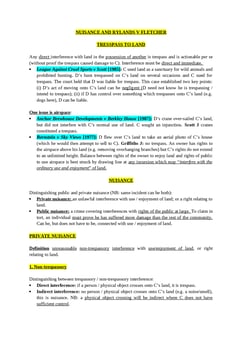Reeves v Commissioner of Metropolitan Police [2000] 1 AC 360
Judgement for the case Reeves v Commissioner of Metropolitan Police
KEY POINTS
A person to whom a duty of care is owed typically has a corresponding duty to exercise reasonable care for their safety. If they intentionally breach this duty, they may be precluded from claiming damages for any resulting harm.
-
However, the doctrine recognizes exceptions to this general rule, particularly in cases where the duty of care extends to taking reasonable care to prevent someone from causing injury to themselves.
These exceptions may apply in situations involving vulnerable individuals, such as young people or those with mental health issues.
FACTS
Martin Lynch was remanded in custody on charges of credit fraud and was also being investigated for handling stolen vehicles. He had previously attempted suicide twice. The police knew he was a suicide risk. Despite this, Mr. Lynch hanged himself in his cell using his shirt. The police had left the hatch in the cell door open, allowing him to do so.
Mrs. Sheila Reeves, who had a child with Mr. Lynch, sued the Metropolitan Police Commissioner for negligently causing Mr. Lynch's death under the Fatal Accidents Act 1976. The trial judge found that the police owed Mr. Lynch a duty to take reasonable care to prevent him from committing suicide, and they had been negligent by leaving the hatch open.
However, the judge ruled that Mr. Lynch's death was solely due to his deliberate act of suicide, and it could be expressed as "volenti non fit injuria" or as a "novus actus interveniens."
The judge also allowed the Commissioner to raise an alternative plea of contributory negligence.
JUDGEMENT
Defendant was liable for damages.
COMMENTARY
This case highlights the duty of care owed by authorities to individuals in custody, particularly those at risk of self-harm or suicide.
It underscores the importance of taking reasonable precautions and ensuring that negligence has meaningful consequences, even when an individual's deliberate act of self-harm is involved.
ORIGINAL ANALYSIS
Defendant’s husband, X, was arrested by Plaintiff and known to be a suicide risk (although perfectly sane). Because the glass was missing from the spy hole, X was able to thread his shirt through it, producing a cord with which to strangle himself.
Defendant, the widow sued Plaintiff.
HL allowed her claim for negligence but reduced it by 50% for contributory negligence.
Lord Hope
"Fault” within the 1945 Act is split into two limbs:
The first limb, which is referable to the defendant's conduct, comprises various acts or omissions which give rise to a liability in tort.
The second limb, which is referable to the plaintiff's conduct, deals with acts or omissions which would, but for the Act, have given rise to the defence of contributory negligence.
The first is directed to the basis of the defendant's liability, while the second is concerned with his defence on the ground that the damage was the result partly of the plaintiff's own negligence.
As a general rule, a person to whom a duty of care is owed is generally under a corresponding duty to take reasonable care for his own safety which, if he intentionally breaches, he may be incapable of claiming any damages.
However there are cases, as here, where the duty of care extends to taking reasonable care to prevent someone causing injury to themselves e.g. young people, the insane etc. There was no break in the chain of causation because the wrongful act (leaving a gap in the spy hole) created the opportunity for X to make a cord, of which suicide was the foreseeable consequence.
See below for non fit violenti iniuria.
Lord Hoffmann
Says that whereas it was the breach of duty of care that “caused” X’s death, X was sufficiently at “fault” within the meaning of s.4 of the act to have the award reduced by half.
Lord Hobhouse (dissenting)
X had autonomous, free, unconstrained choice.
He was not mentally ill, too young, misinformed and therefore he caused his own death.
See below for volenti non fit iniuria
RELATED CASES
For Further Study on Reeves v Commissioner of Metropolitan Police
Need instant answers? Our AI exam tutor is here to help.
Ask questions 🙋 Get answers 📔 It's simple 👁️👄👁️
Our AI is educated by the highest scoring students across all subjects and schools. Join hundreds of your peers today.
Get StartedSimilar Cases
Related Product Samples
These product samples contain the same concepts we cover in this case.

 Since 2010, Oxbridge Notes has been a trusted education marketplace, supplying high-quality materials from top achievers at universities like Oxford, Cambridge, LSE, Harvard, and Yale.
Since 2010, Oxbridge Notes has been a trusted education marketplace, supplying high-quality materials from top achievers at universities like Oxford, Cambridge, LSE, Harvard, and Yale.